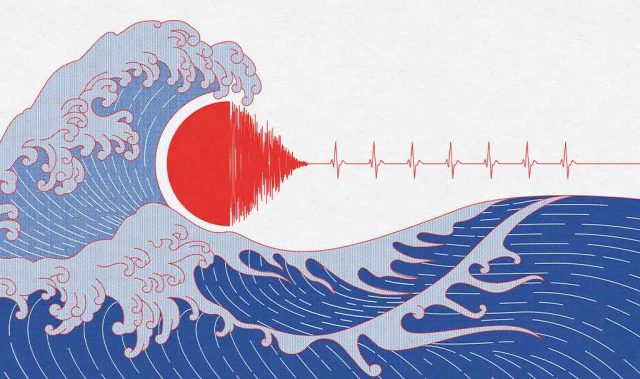
Asian Scientist (Jul. 24, 2013) – An international team of researchers has confirmed that subatomic particles called neutrinos have a new form of identity-shifting property. The discovery may help scientists solve the mystery of why the universe contains matter but very little antimatter.
The findings are further confirmation of results from the T2K neutrino experiment in Japan which reported that neutrinos changed, or oscillated, between different types in a previously unknown manner.
“Our findings now open the possibility to study this process for neutrinos and their antimatter partners, the anti-neutrinos,” said Dr Alfons Weber, who designed the electronics for the experiment.
“A difference in the rate of electron or anti-electron neutrino being produced may lead us to understand why there is so much more matter than antimatter in the universe.”
In 2011, the T2K collaboration announced the first indication of this process. Now with 3.5 times more data, this behavior is firmly established and can now be termed a discovery.
There are three types, or ‘flavors,’ of neutrinos – one paired with the electron (called the electron neutrino), and two more paired with the electron’s heavier cousins, the muon and tau leptons. These different flavors of neutrinos can spontaneously change into each other, a phenomenon called neutrino oscillations.
Observations have previously been made of a number of different types of oscillations, however the T2K results are the first discovery of the appearance of electron neutrinos in a beam of muon neutrinos, and it is this kind of oscillation which is the key to making measurements to distinguish the oscillations of neutrinos and anti-neutrinos.
To explore the neutrinos’ oscillations, the T2K (Tokai to Kamioka) experiment fired a beam of neutrinos from the J-PARC laboratory at Tokai Village on the eastern coast of Japan, and detected them at the Super-Kamiokande neutrino detector, 295 km away in the mountains of the north-western part of the country.
Here, the scientists looked to see if the neutrinos at the end of the beam matched those emitted at the start.
They found 22.5 neutrinos appearing in the beam of muon neutrinos, where if there were no oscillations they only expected to see an average of 6.4. This indicates the discovery of the new type of oscillation. Now the team must make more accurate measurements of this new oscillation, and then run their experiment with an anti-neutrino beam to see if the results change.
“We have seen a new way for neutrinos to change, and now we have to find out if neutrinos and anti-neutrinos do it the same way,” said Professor Dave Wark, a leader of the team.
“If they don’t, it may be a clue to help solve the mystery of where the matter in the universe came from in the first place.”
“Surely answering that is worth a couple of decades of work!”
——
Source: Science and Technology Facilities Council; Photo: deperio/Flickr.
Disclaimer: This article does not necessarily reflect the views of AsianScientist or its staff.












